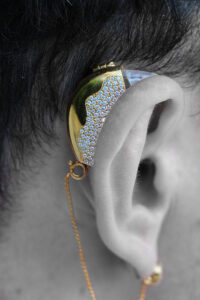Design Meets Disability
I do not associate medical or disability-assistive products with design. To me, it only mattered how functional or practical they were, and not their aesthetic value. What I appreciated about the author’s perspective was how they treated people with disabilities as a distinct user group whose preferences and needs are often overlooked by designers and engineers.
Further into the reading, I started to feel bad that people with disabilities are often forced to choose between a device that functions well and one that’s subtle or aesthetically pleasing. These goals seem to conflict with current design approaches. Even within the category of disability, there’s a wide range of experiences that should shape how products are created.
I really liked the author’s example of eyeglasses.  Glasses are no longer seen as a disability aid, but are now a fashion statement. Although, to be honest, personally glasses have always just been a medical necessity for me. But also I refuse to get laser because I now think I look better with glasses anyways. I could think of some other examples back from high-school as well: hearing aids and braces for teeth.
Glasses are no longer seen as a disability aid, but are now a fashion statement. Although, to be honest, personally glasses have always just been a medical necessity for me. But also I refuse to get laser because I now think I look better with glasses anyways. I could think of some other examples back from high-school as well: hearing aids and braces for teeth.
I strongly believe that the notion that assistive devices must remain discreet reflects a broader limitation or bias in design thinking. It is a kind of hesitation in creating bold, confident products that users would actually be proud to display. However, I do think that with every passing year, adaptive fashion is becoming increasingly popular, and this will help begin a new era of accessibility.
